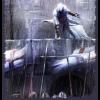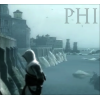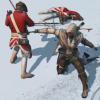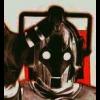Reference to AC1 and AC2
I have found out a common jesture that links AC1 and AC2, or more specifically the memory's of the ancestors before Ezio and Altiar. It is the small yet important jesture of "rest in peace" that is performed on a dead templar just before he is dead.
It can be seen here in the Assassination of Vieri de Pazzi from 1:48>1:51 Mario says "Requisscai in Pace" which is Italian for rest in peace.
http://www.youtube.com/watch?v=-J5e6rxIBNQ&feature=related
And (arguably less clear) in the opening AC1 trailer after Altiar has air assassinated the main templar at 1:04
http://www.youtube.com/watch?v=cc-ClutaN_I
Was this a common trait, or signiture move of the Hashasheen? Please let me know your thoughts.
Yeah, it's done in all the games. I don't know if it's customary or anything, but it does help in portraying the assassin's not as merciless killers, but as people who don't like to kill, but are forced to, or something to that extent. 
I doubt it was used in real life by the first assassins but I'd still like to think so  it seems to be used in-game to make the assassins seem far more respectful of human life than their enemies. The assassins follow a kind of utilitarian approach - only killing to prevent more deaths in the future. The use of requiescat in pace represents the respect they have for life and that every kill is full of regret. Also, it sounds cool
it seems to be used in-game to make the assassins seem far more respectful of human life than their enemies. The assassins follow a kind of utilitarian approach - only killing to prevent more deaths in the future. The use of requiescat in pace represents the respect they have for life and that every kill is full of regret. Also, it sounds cool 
Was this a common trait, or signiture move of the Hashasheen?
The signiture move of the Nizari fedayeen of Rashid Sinan (as well as the Persian assassins) was that they let the guards kill them after they completed their mission. That way they instilled even more fear in their enemies by showing that they don't fear death.
Good thing they didn't choose that move. Genetic memory would be impossible to figure out then, let alone having a long game.
Thanks for your responses, gentlemen 





